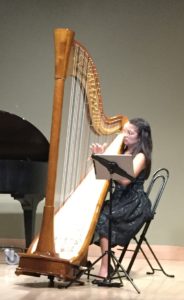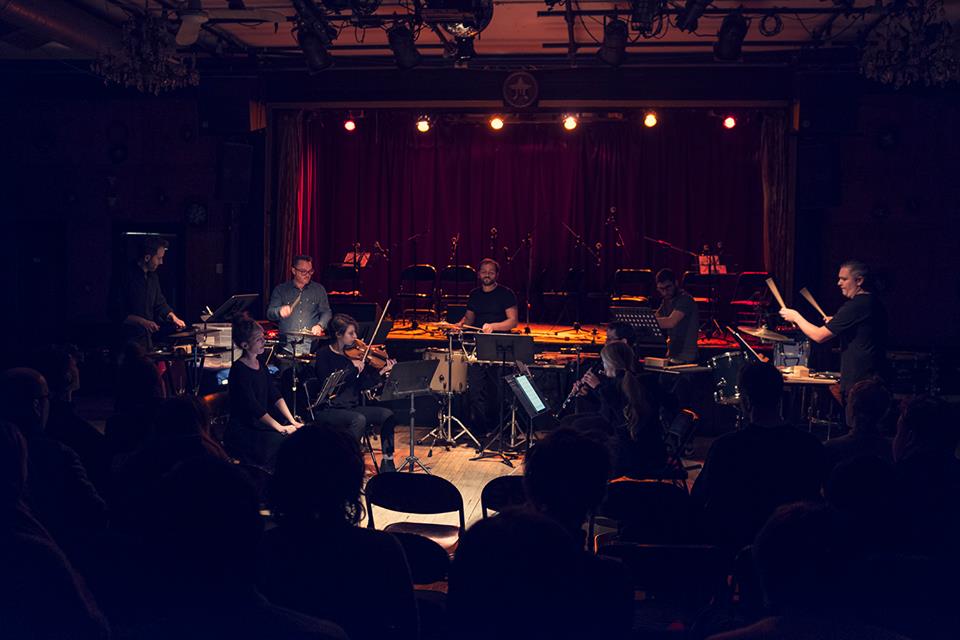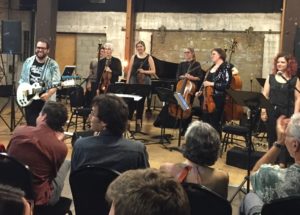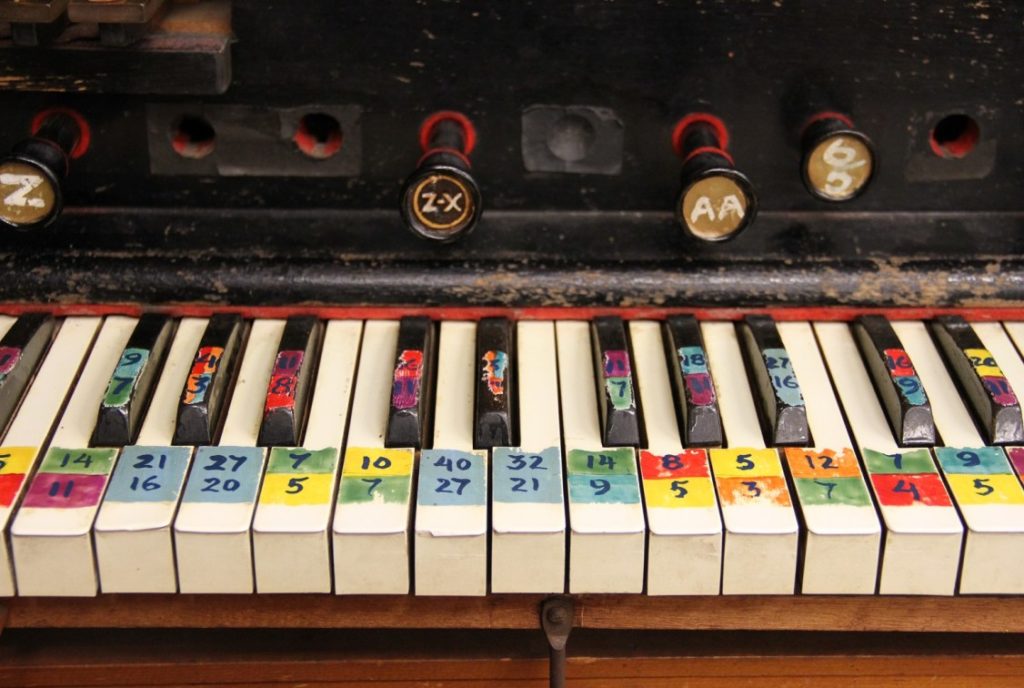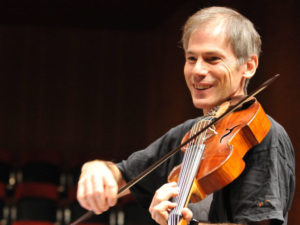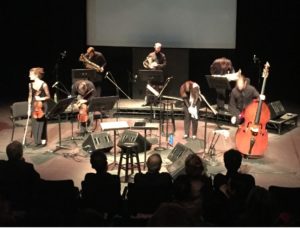 The much anticipated work The Cantata or, You are the star in God’s eye, by Wolfgang von Schweinitz was performed May 23, 2018 at the REDCAT venue in Disney Hall. A joint production of wasteLAnd and Microfest, the evening featured the wasteLAnd collective musicians conducted by Nicholas Deyoe and the recorded voice of Friederike Mayröcker’s original text with the English translation projected on a large screen. A fine crowd filled REDCAT to hear this extraordinary piece as it explored the intersection of Austrian avant-garde literature and 21st century music written in just intonation.
The much anticipated work The Cantata or, You are the star in God’s eye, by Wolfgang von Schweinitz was performed May 23, 2018 at the REDCAT venue in Disney Hall. A joint production of wasteLAnd and Microfest, the evening featured the wasteLAnd collective musicians conducted by Nicholas Deyoe and the recorded voice of Friederike Mayröcker’s original text with the English translation projected on a large screen. A fine crowd filled REDCAT to hear this extraordinary piece as it explored the intersection of Austrian avant-garde literature and 21st century music written in just intonation.
The Cantata has its origins in the prose of Friederike Mayröcker, considered one of the most important figures in post-war Austrian letters. Her poetry and radio plays have been a part of contemporary European literature since 1946, and the libretto for The Cantata was written as a remembrance of her long-time partner, the Viennese poet Ernst Jandl. This was produced by Bavarian Radio in 2003 with original music scored by Wolfgang von Schweinitz. Mayröcker once described her artistic process in Heimspiel (the Journal of the Austrian public radio station) as “I live in pictures. I see everything in pictures, my complete past, memories are pictures. I transform pictures into language by climbing into the picture. I walk into it until it becomes language.” Accordingly, the text of The Cantata is filled with all sorts of vivid imagery: organic, concrete, abstract and spiritual. Written shortly after the passing of Ernst Jandl, the text includes a number of arias that are especially moving – even religious – inspired by the cantatas of JS Bach.
For this performance, the music for The Cantata was completely revised between 2016 and 2017 for the wasteLAnd collective. As von Schweinitz wrote in the program notes: “When I rewrote the score for the wasteLAnd collective, I left the temporal and harmonic structure of the composition in its original form, as well as most of the soprano part, with just a few minor modifications for Stephanie Aston’s voice, but two of the ensemble parts are entirely new, and I’ve drastically changed the other four parts, adding a lot of new melodic and harmonic details in the attempt to improve the elegance and efficiency of my counterpoint – with the aim of trying to optimize the chances for the musicians to accomplish all of their tuning and performance tasks with greatest success and pleasure.”
The Cantata opens with the recorded text of Friederike Mayröcker’s libretto, spoken by the poet in German. The English translation by Donna Stonecipher was projected on a large screen behind the musicians. The music began with a warm, nostalgic feel and a beguiling sweetness that perfectly captured the forest and flowers described in this initial part of the text. The work proceeded with continuously spoken words accompanied by long stretches of instrumental and vocal music. Sometimes the feeling was wistfully regretful while at other times more forceful and dramatic, but always driven by the imagery of the prose. The arias were most particularly powerful when they dealt with the sacred and the metaphysical, the music soaring like a luminous chorale tune in a solemn Passion. Ms. Aston, coping with an almost continuous vocal line that often included great jumps in pitch, brilliantly applied her strong and agile voice to the expressive libretto. The powerful brass section of the wasteLAnd collective provided a solid foundation of German sensibility. For the mostly English-speaking audience, the unconventional pitches and harmonies in the tuning actually served to intensify the sense of immersion in another culture, and nicely complimented the elegant German prose heard in the recording. A profound silence was observed at the conclusion of this work, followed by loud cheering and sustained applause. The Cantata or, You are the star in God’s eye is a moving journey through poignancy and sorrow as seen through the words of Friederike Mayröcker and felt in the music of Wolfgang von Schweinitz.
